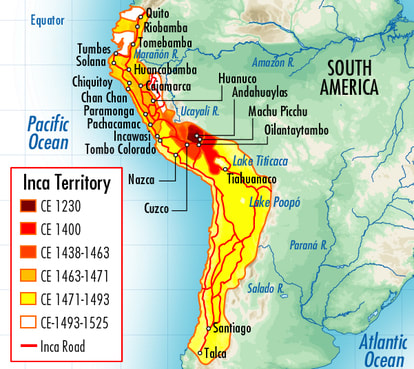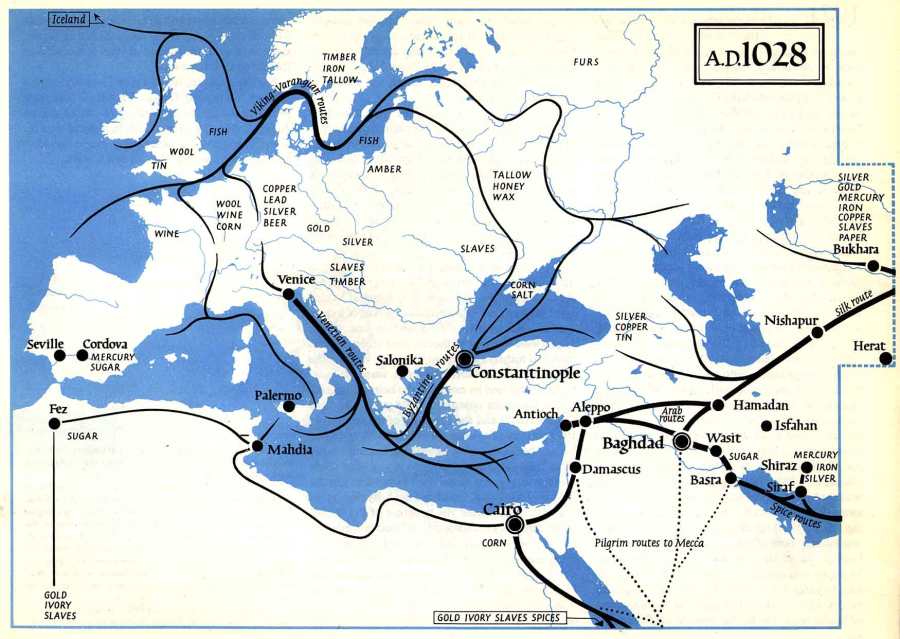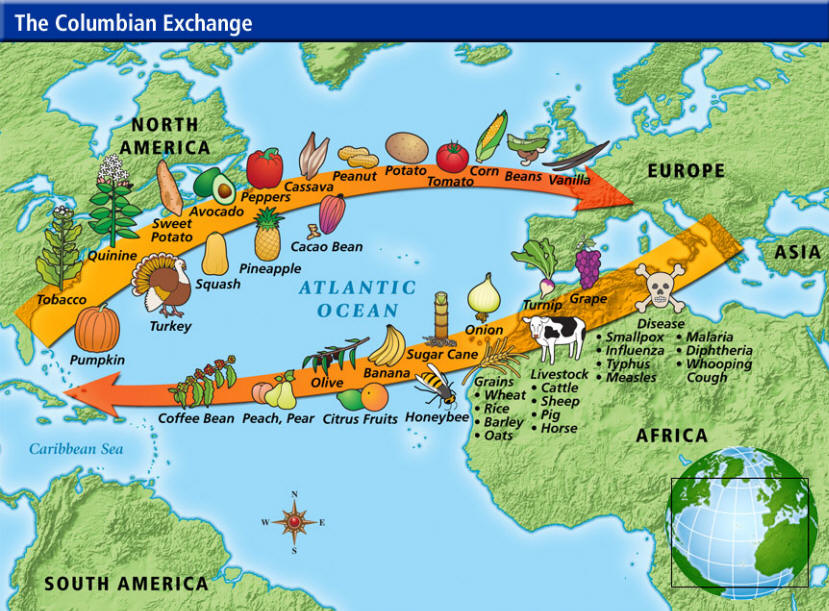Lesson 4 - The Conquistadors.
Big questions and some more answers
In the last lesson we once again addressed some of those big questions about warfare that we set out at the start of this unit. The Crusades have provided us with a very clear indication of what extraordinary things humans are capable of. To endure the hardship of a three thousand kilometre march and to fight a war for an abstract idea, tells us something significant about the power of ideas to motivate humans to act. War also led our medieval ancestors to build architectural stone marvels like concentric castles which still stand today. How much of what we build in the 21st century will still be standing in 100 years time, let alone 1000 years?
But the Crusades also revealed a dark side of humanity and marked a clear turning point in history, the consequences of which we are still facing today. The War Against Terror that has been fought since 9/11, 2001 is just the latest instalment in this long running religious saga. If the 'other' that you fight is somehow dehumanised - remember Pope Urban II called the muslims 'foul creatures' - barbaric behaviour can then easily be justified. (Dehumanisation is stage 4 in the 10 stages of genocide) The Pope's speech, just like the Bayeux Tapestry before it, illustrated the power of those in authority to persuade people to act in ways that suit those same authorities. The first casualty in war is the truth.
In the last lesson we once again addressed some of those big questions about warfare that we set out at the start of this unit. The Crusades have provided us with a very clear indication of what extraordinary things humans are capable of. To endure the hardship of a three thousand kilometre march and to fight a war for an abstract idea, tells us something significant about the power of ideas to motivate humans to act. War also led our medieval ancestors to build architectural stone marvels like concentric castles which still stand today. How much of what we build in the 21st century will still be standing in 100 years time, let alone 1000 years?
But the Crusades also revealed a dark side of humanity and marked a clear turning point in history, the consequences of which we are still facing today. The War Against Terror that has been fought since 9/11, 2001 is just the latest instalment in this long running religious saga. If the 'other' that you fight is somehow dehumanised - remember Pope Urban II called the muslims 'foul creatures' - barbaric behaviour can then easily be justified. (Dehumanisation is stage 4 in the 10 stages of genocide) The Pope's speech, just like the Bayeux Tapestry before it, illustrated the power of those in authority to persuade people to act in ways that suit those same authorities. The first casualty in war is the truth.
Heritage Object - The Statue of Francisco Pizarro in Trujillo, Spain.
|
|
Francisco Pizarro (1471–1541) was a Spanish soldier/sailor/explorer (conquistador) whose conquest of the Inca Empire in the 1530s made him and his men fantastically wealthy and significantly increased the size of the Spanish empire in the Americas. Born into a poor family, in one of the poorest regions of Spain, Pizarro's journey from illiterate peasant to fabulously rich conquistador, the founder of the city of Lima, is a classic 'rags to riches' tale.
As Encyclopedia Brittanica explains 'Inca, also spelled Inka, South American Indians who, at the time of the Spanish conquest in 1532, ruled an empire that extended along the Pacific coast and Andean highlands from the northern border of modern Ecuador to the Maule River in central Chile. Inca technology and architecture were highly developed, although not strikingly original. Their irrigation systems, palaces, temples, and fortifications can still be seen throughout the Andes.' At the key battle of Cajamarca in 1532, Pizarro had a force of just 110-foot soldiers, 67 cavalry, a few arquebuses (primitive muskets) and one or two falconet cannon against a potential Inca army of 80,000. And yet he won. The fact of his imposing statue and the dedicated museum in his home town seems to be proof enough of his heroic status. But does he deserve it? This lesson is all about heroes in history. But it also about the problem of statues and - as you may have noticed this year (2020) - why people sometimes want to pull them down. |
A bit of background
The changing nature of warfare.
By the later medieval period, warfare had developed in two significant directions. Firstly, the peasants forced to fight by local lords as part of a feudal service had begun to be replaced by professional mercenaries. A mercenary is a professional soldier who fights for whoever pays them. States became increasingly centralised (see Matu 1) and an ability to fund an army became more important. The most sought after mercenary soldiers were the Swiss and consequently the Swiss cantons became rich on their ability to provide high quality soldiers (and political neutrality). The Swiss soldiers were pikemen who used a halberd made up of cutting blades and hooks (see film image below). These were excellent for dealing with cavalry, as the hooks could drag an enemy soldier from his horse.
The second significant development came with effective use of gunpowder. The first long guns called the arquebus were developed in the 15th century and would be important in the European conquest of the Americas. The development of heavy cannon in the 16th century marked the beginning of the end for the use of castles as an impenetrable form of defence. See the short films below for more details.
The changing nature of warfare.
By the later medieval period, warfare had developed in two significant directions. Firstly, the peasants forced to fight by local lords as part of a feudal service had begun to be replaced by professional mercenaries. A mercenary is a professional soldier who fights for whoever pays them. States became increasingly centralised (see Matu 1) and an ability to fund an army became more important. The most sought after mercenary soldiers were the Swiss and consequently the Swiss cantons became rich on their ability to provide high quality soldiers (and political neutrality). The Swiss soldiers were pikemen who used a halberd made up of cutting blades and hooks (see film image below). These were excellent for dealing with cavalry, as the hooks could drag an enemy soldier from his horse.
The second significant development came with effective use of gunpowder. The first long guns called the arquebus were developed in the 15th century and would be important in the European conquest of the Americas. The development of heavy cannon in the 16th century marked the beginning of the end for the use of castles as an impenetrable form of defence. See the short films below for more details.
|
|
|
1453-1492: Out of the 'Middle Ages', Renaissance and the conquistadors
Constantinople (today Istanbul in Turkey) was the largest and wealthiest city in Europe in the late middle ages. Until 1453 it was the home to the Eastern Orthodox Christian church and the most important centre of learning with the greatest libraries of Greek and Roman literature in Christendom. When Constantinople was taken over by the Muslim Ottoman Turks in 1453, scholars and their libraries flooded western Europe, especially northern Italy. This would be one of the main causes of the Renaissance which was based on the 'rebirth' of the interest in classical culture and civilisation. But also important was the fact that Constantinople had been the centre of trade, especially via the Black Sea to the east. See map below. With Constantinople now under the control of a hostile power, trade was seriously disrupted and Europeans began to look for alternatives.
|
In the fifteenth century Italy became a key centre for European trade with the east, because it attracted many scholars, bankers, merchants and trades people. Wealthy families acted as patrons to scholars and artists, providing them with work and a living, so cities such as Florence became centres of Renaissance learning and the arts. For Europeans, the east - countries such as India and China - were a source of many luxury goods. For example, spices, cottons, silks and delicately coloured porcelain were much sought after in Europe. With the Ottoman Turks now in control of Constantinople, western Europeans began to seek alternative trading routes to the East. |
In 1492 the Spanish monarchy of Ferdinand and Isabella, fresh from their conquest of Arab Spain, agreed to provide the money. It was an enormous risk. Columbus underestimated the width of the Atlantic by about half, but he was successful. The islands of the Caribbean (the West Indies - Columbus always believed he had landed in India) became part of the Spanish empire. Later the Portuguese explorer Ferdinand Magellan became the first to circumnavigate (sail around) the Earth (1519-1522). Magellan also named the Pacific Ocean. Amerigo Vespucci was an Italian explorer was the first person to realise that the Americas were separate from the continent of Asia. America was named after him in 1507. In the 1480s, the Genoese sailer Christopher Columbus began contacting and visiting the courts of Europe - Portugal, Venice, Genoa, France etc, - trying to persuade someone to finance a voyage west to the Indies.
|
Columbian 'exchange'.
Conquistadors were the soldiers and explorers of the Spanish and the Portuguese Empire who conquered the native populations of south and central America and took their lands and subjected them to European rule. The great empires of central and southern America - the Aztecs and Incas - were decimated by superior European military technology and infectious diseases. Economically the global economy was transformed. European overseas expansion led to the contact between the Old and New Worlds producing the 'Columbian Exchange', named after Columbus. It involved the transfer of goods unique to one hemisphere to another. Europeans brought cattle, horses, and sheep to the New World and from the New World Europeans received tobacco, potatoes and maize. |
|
Massive profit could be made by those who risked money on investing in explorers and trading adventurers. Investors joined together to raise the necessary capital in joint-stock companies and shared in the profits depending on how much of the stock they owned. An investor's share in the company's stock could be sold at whatever price buyer and seller may agree upon. With this concept of stocks and shares, one of the basic elements of the modern economic system (capitalism) evolved.
|
|
The consequences of the Colombian exchange were profoundly important. This episode of Crash Course History provides with you with a good overview. Once you feel you have understood the historical context which produced Francisco Pizarro, you can go on to look at the Case Study - 1532 The Battle of Cajamarca. |




